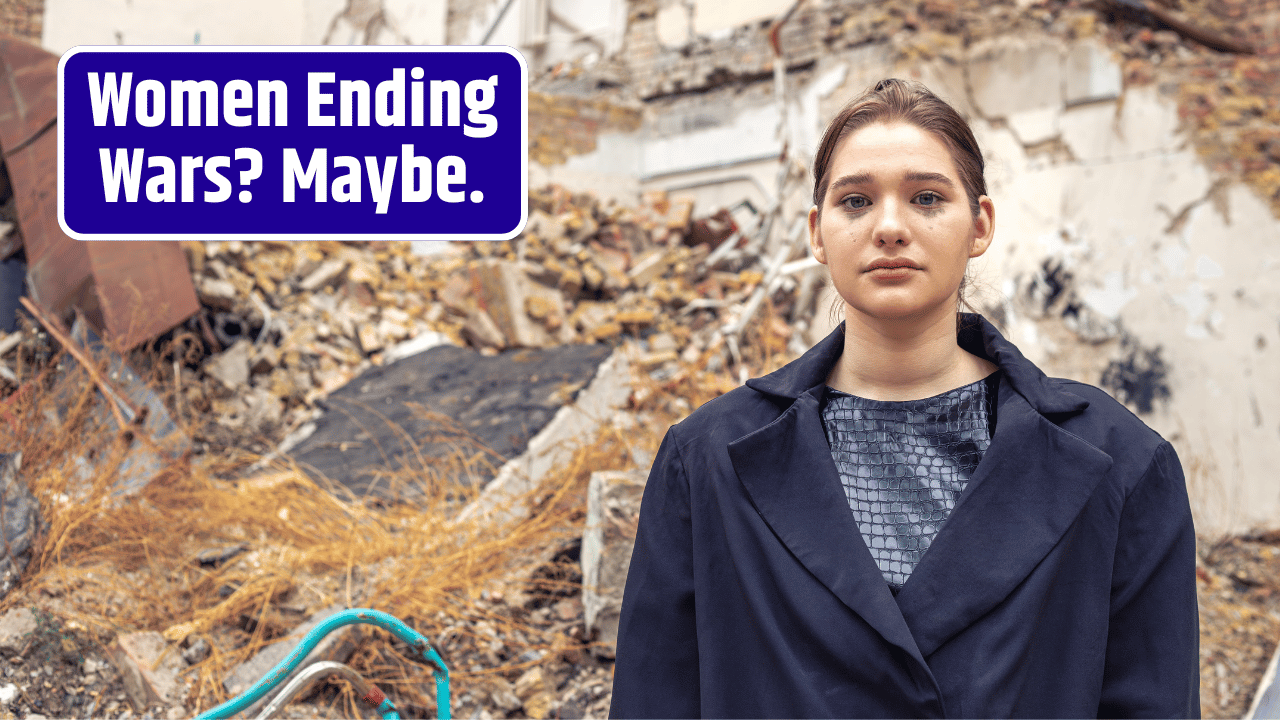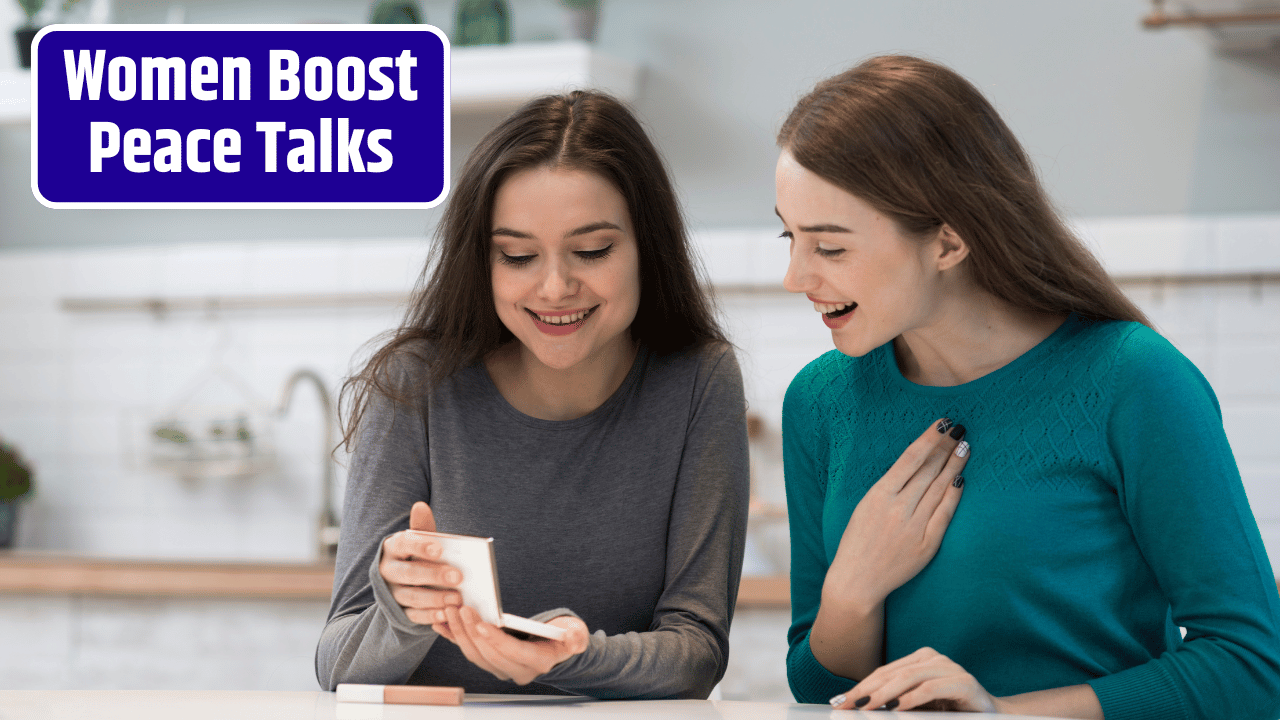You ever notice how peace talks tend to look the same? A long table. Maybe a flag or two. A bunch of men in dark suits talking in circles while their countries burn in the background.
Meanwhile, off-camera—far from the press conferences and diplomatic back-patting—women are already building peace. They’re brokering ceasefires between rival clans. Smuggling food into besieged towns. Organizing trauma counseling in refugee camps. No titles. No security detail. Just sheer grit.
And here’s the kicker: they’re often more successful than the “official” negotiators.
Yeah. Let that sink in.
Table of Contents
The Numbers That No One Talks About
We’re not here to romanticize anything—women aren’t magical unicorns of peace. But the data doesn’t lie, and it’s finally backing up what activists and grassroots organizers have been screaming for decades.
A meta-study by UN Women and the Peace Research Institute Oslo (PRIO) found that:
| With Women Involved | Without Women Involved |
|---|---|
| Peace agreements are 35% more likely to last 15+ years | Higher chance of relapse into conflict |
| Increased inclusion of civil society and minority voices | Narrow focus on military and political elites |
| Higher public legitimacy and post-war trust | Communities feel ignored, resentful |
| Gender-based violence more likely to be addressed | Often left off the agenda entirely |
The numbers don’t just suggest women can build peace—they show they’re instrumental to making it last.
So why aren’t we seeing more of them leading?
Where Diplomats Tread Lightly, Women Walk Through Fire
Let’s be real. Most high-level peace talks are a hot mess of egos, optics, and geopolitical posturing. Think of them like a game of Risk—with very real consequences.
But women peacebuilders? They’re often working from a completely different playbook.
Take Liberia, where a coalition of Christian and Muslim women—many of them survivors of violence—literally locked the negotiating parties into a room until they signed a ceasefire in 2003. No one took them seriously at first. Until they ended a civil war.
Or Colombia, where women’s organizations lobbied relentlessly to ensure the 2016 peace deal included gender provisions, land rights, and justice for victims of sexual violence. Without their push, much of that wouldn’t have made the final agreement.
In these cases, women didn’t wait to be invited. They showed up. Loud. Persistent. Relentless.
And they changed the game.
Why Women Get Peace Done Differently
There’s something to be said for the fact that women often experience conflict differently—and so, naturally, they resolve it differently.
Instead of asking, “Who gets the most power?”, they ask:
- Who’s still homeless?
- Who needs education?
- How do we make sure the violence doesn’t come back next year?
They focus on reconciliation, not just resolution.
On infrastructure, not just ceasefires.
On healing, not just headlines.
That’s not a bug in the system. It’s the damn blueprint for lasting peace.
So What’s Holding Them Back?
It’s not a lack of skill, or will, or results. It’s the same thing that always holds women back: power hoarding and systemic bias.
Here’s how it plays out:
| Obstacle | Reality |
|---|---|
| Tokenism | Women are invited “for optics,” not influence |
| Underfunding | Less than 1% of peace and security funding goes to women’s groups |
| Informal roles ignored | Community peacemaking isn’t seen as “real” diplomacy |
| Risk of violence | Women peacebuilders often face threats, smear campaigns, even assassination |
Add to that cultural stigma, limited mobility in conflict zones, and zero political cover—and it’s no surprise women are still fighting to be heard while also trying to end a war.
Imagine If They Had Full Backing
Let’s flip the question: Not “Can women end wars?” but what if they were fully empowered to try?
What if we:
- Required 50/50 gender representation in all formal peace processes
- Channeled real funding into local, women-led peace efforts
- Protected female peacebuilders the same way we protect diplomats
- Treated informal negotiations as equally critical to formal diplomacy
It’s not that far-fetched. Countries like Rwanda and Nepal have already shown what gender-balanced post-conflict governance can look like. The UN’s Women, Peace, and Security Agenda gives a roadmap. But we need more than frameworks—we need follow-through.
Final Word: Give Women the Damn Mic
So yeah, women can end wars.
They’ve done it before, they’re doing it now, and they’ll keep doing it—with or without permission.
But imagine what they could accomplish if the world actually backed them up, instead of politely clapping from the sidelines?
Next time the peace talks stall, maybe we stop looking at the generals and diplomats and start listening to the women already working on the ground.
They’ve been in the war long enough.
They’ve earned their seat.
Hell, they built the damn table.
FAQs
Is there hard data showing women are better at peacebuilding?
Yes. Multiple studies show peace deals are more durable and comprehensive when women are involved.
What’s stopping more women from leading peace processes?
Institutional sexism, lack of funding, tokenism, and risks to personal safety—just to name a few.
What’s the first step to fixing this?
Start with mandatory inclusion, and back it with funding and protection. Lip service isn’t enough.














